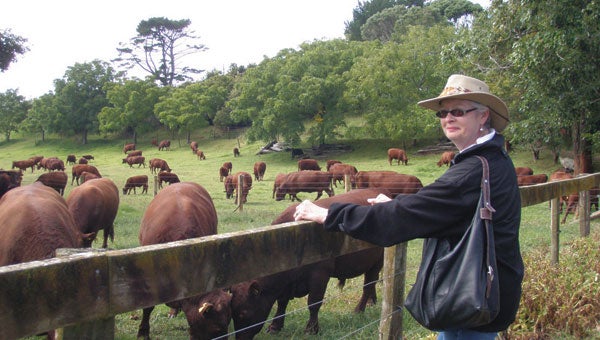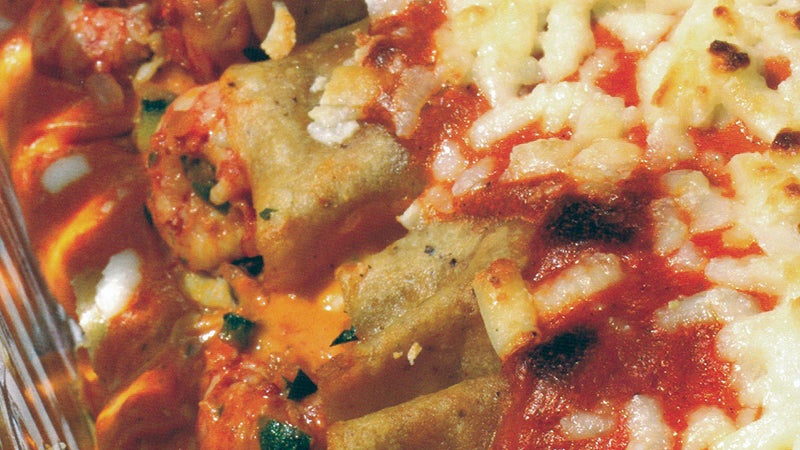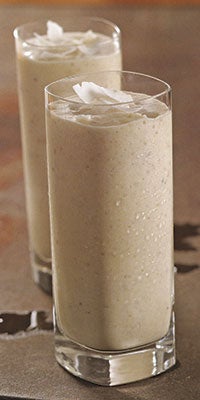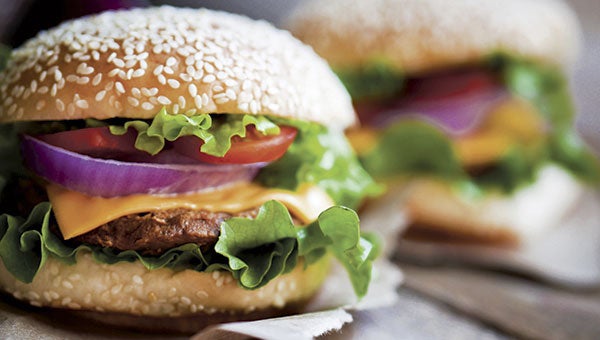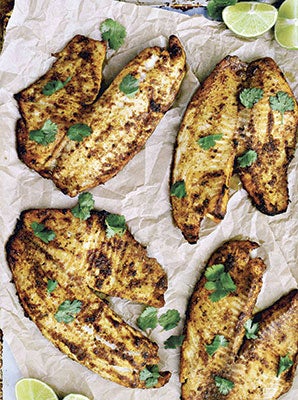Kiwis known for fresh food
Published 12:24 am Saturday, March 8, 2014
We have just returned from a two-week trip to New Zealand and it was a Red Devon Tour. Those of you who know your cows, know this as a heritage breed and one that we have been working with for the past four years.
I am not big on tours but this one turned out to be well organized and there were no great problems with people being late to get on the bus or to dinner. There were 28 of us and only seven were Americans. The rest were from Brazil and Australia plus our New Zealand hosts. All were fun travelers and we got along well.
New Zealand is known for its beauty and lots of sheep and cattle. In fact, there are more dairy cows than people. We were not disappointed.The view from the mountains to the sea was gorgeous. The cattle were just so fat and seemed so well taken care of. Of course it was summer there, and the grass was very good. We toured only the north island from Auckland to Wellington. The south island will have to be done another time.
New Zealand is consistently rated as one of the best places to live and is one of the most active nations: Kiwis (as they are called) seem to be born with a love of the outdoors, and families tramp (hike to us), caravan, sail, and play rugby, cricket, and netball together. Most Kiwis are well educated, and they value travel highly. They are concerned with their future. The Department of Conservation now focuses on environmental issues, reflecting the national love of the outdoors and the importance of the landscape to the country’s burgeoning tourism industry. Although New Zealand is making great strides in sustainability, the country aims for a “100 percent Pure” lifestyle. They are having problems just like the rest of us with obesity and crime, just on a smaller scale.
We visited several Red Devon farms and found the breeders and their wives so very nice. They always had tea for us and lots of food: freshly baked scones, fruitcake, oaty cookies, corned beef sandwiches (made from the Red Devon cows), and fresh cream (also from the cows) for the scones. Because of the tour, we got to visit places other tourists would never see.
We not only visited farms, but museums, a boat tour of a glowworm cave, harbor tours, and a little time was given for shopping. New Zealand is known for their possum fur which combined with merino wool and some silk, make wonderful caps, scarves, and jackets. The possum was an invasive introduction until they decided to farm them and use the fur.
Most of us only think of the kiwi fruit or kiwi bird when we think of New Zealand. We did see groves of kiwi plants and they do make kiwi soap and jam. The kiwi birds are hard to find as they are nocturnal, but we did go to a museum and saw one kiwi bird. They are not very attractive, with a big grey body and a long beak. But there is an effort to protect the birds since only about 1 out of 9 eggs survive. Our hosts work with saving kiwis in their off time from the farm.
The story of the kiwi fruit is interesting. A missionary brought Chinese gooseberries to New Zealand. Another man developed a bigger better variety. They were popular with Americans during WWII and New Zealand tried to export them to the US, but as they were berries they were considered growing on the ground and there would be higher duties. They changed the name to Kiwi melons but melons still grew on the ground and had high duties—-so Kiwi fruit they became. Kiwis are New Zealanders, or the birds. The edible kiwi is a ‘kiwi fruit.’
I was very impressed with the food. When we asked our guide what you think of when you mention New Zealand food, she said “fresh.” I would tend to agree. We had wonderful grass-fed steak several nights, good seafood, excellent vegetables, and wonderful desserts. Every evening we had a three-course meal! Sometimes I was so tired I thought I would not get through the meal but somehow I did! Another great thing about New Zealand is the wine! It is especially known for its sauvignon blancs. In the South Island, Marlborough is the country’s largest grape-growing area, producing more than 70 percent of New Zealand’s wine.
I could go on and on about the trip and will devote one more article next week about our visit. One thing of interest which I did not know was that the dessert, pavlova, is said to have come from New Zealand, even though Australia claims the creation of this dessert also. The story goes that in 1926 the prima ballerina Anna Pavlova came from Russia to perform in New Zealand and then in Australia in 1929. After this visit a dessert named pavlova was named for her. You will see this dessert on many menus, and most of us know of this as a very sweet meringue dessert served with some cream on top of the meringue with fruit on the cream. Of course they use kiwi in New Zealand. I made one of these and they are easy and very good. You could use strawberries with the kiwis also. It is considered the national dessert of New Zealand.
Pavlova
8-10 servings
Ingredients
½ cup egg whites, at room temperature (from about 4 eggs)
1/8 teaspoon cream of tartar
1/8 teaspoon salt
1 cup granulated sugar
1 ½ teaspoons cornstarch
1 tablespoon raspberry vinegar or red wine vinegar
½ teaspoon pure vanilla extract
1 ¼ cups heavy cream
2 tablespoons light brown sugar, packed
2 kiwi fruits, peeled and thinly sliced, or 1 cup another ripe fruit, such as peaches, strawberries, raspberries, blueberries or blackberries
Directions:
Preheat the oven to 350 degrees.
In a mixer fitted with a whisk attachment (or use a hand mixer), whip the egg whites, cream of tartar and salt in a clean, dry bowl until foamy. Add the granulated sugar, cornstarch, vinegar, and vanilla and continue whipping until stiff, smooth and glossy, about 8 minutes more. On a sheet of parchment paper cut to fit a sheet pan, use a pencil to draw or trace a circle 9-inches in diameter. Line the sheet pan with the parchment, pencil side down (you should still be able to see the circle). Spoon the egg whites into the circle, using the back of the spoon to smooth the top and sides of the disk. Bake in the center of the oven for 10 minutes, then reduce the heat to 300 degrees and bake until the meringue has puffed up and cracked on the top and the surface is slightly browned to the color of café au lait, about 45 minutes more. Turn off the oven, prop the oven door open, and let the pavlova cool in the oven at least 30 minutes, to room temperature.
Whip the cream and the brown sugar together until stiff. Spoon it in the center of the cooled pavola and spread out to within 1/2-inch of the edge. Arrange the slices of kiwi around the edge or whatever fruit you have chosen. To serve, slice into wedges with a serrated knife.


